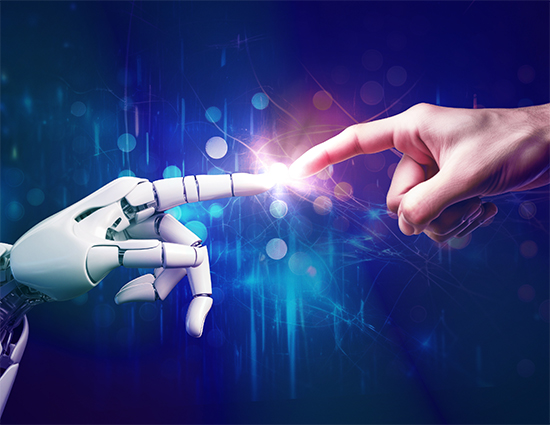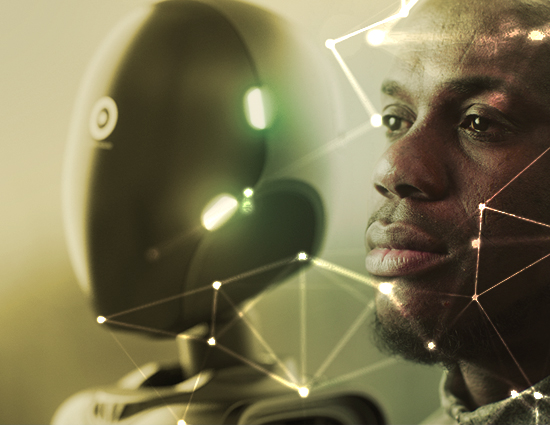While other sectors have embraced the digital age and forged ahead with new technologies, techniques and approaches, construction has seen slower change. Some estimate that manufacturing productivity has increased eight-fold and agriculture 16-fold in the last 70 years, while construction has barely improved, according to a McKinsey Global Institute report from 2017. We all know the factors behind this state of play, which include regulatory frameworks and contracting structures, as well as the supply chain element.
That said, a significant opportunity now exists to accelerate digital innovation in the space by hastening the adoption of automation and autonomy. Advances in artificial intelligence (AI), sensing capabilities and low-power operation are central to the rapidly growing sophistication of automation and autonomy technologies. AI-powered systems that utilise vast amounts of data to imitate human intelligence are enabling robotic machines, vehicles and drones to transform levels of efficiency and productivity.
This imperative for improved productivity is coinciding with two driving factors: the global labour shortage and the increasing sophistication of current and emerging technologies. They offer the opportunity for automation – and full autonomy – to be embraced as part of a digital transformation solution.
Automation in construction
But let’s be clear: the adoption of automation has a number of very specific challenges because of the uncontrolled and constantly evolving construction environment. This does not play to traditional automation strengths. In many other scenarios, replacing humans with robots for boring, repetitive tasks where the same actions are repeated consistently can be relatively straightforward. But a construction site is constantly changing, by its very nature. This means that automation solutions, where machines are employed to replicate a series of manual tasks, typically require a good level of flexibility or adaptability.
Autonomous navigation in dynamic settings.
In the case of activities where autonomy is required (that is where the solution is the automation of a series of interdependent complicated tasks) then the solution needs a level of sophistication to cope with the dynamic environment that has been difficult to create in a cost-effective manner. A way through the challenge is to create a current digital picture of the site and its component parts which has the sophistication to adapt and evolve as the site changes.
Automation in construction is less likely than some industries to lead to a reduction in employment. Rather automation can be used to augment humans on site, dealing with labour shortages and so on. It is also extremely useful for taking on dangerous and dirty tasks with the associated benefit of reducing risk of injury to operators on site. Initially this level of flexibility would require oversight by an operator, but in the fullness of time, as the digital ecosystem evolves, increasingly autonomous robots will undertake a broad range of tasks.
The trend towards offsite construction of modular components is also accelerating, enabling reduced disruption to active sites. For example, the recent A14 trunk road improvement scheme in the UK used off-site construction of key components to minimise site disruption, as Skanska’s project overview explains. The approach included detailed digital maps of the site, shared across all project partners, to provide a single point of reference for planning. The results were clear, with the scheme delivered months ahead of schedule.
The rich digital picture is a key enabler. At its most fundamental it is a common picture of the environment to ensure that everyone is on the same page – what is often referred to as a digital twin. But the opportunity goes beyond the basic digital twin approach of digitising and sharing site maps and plans. A more sophisticated, connected digital ecosystem of physical and virtual assets can enable real-time dynamic adaption to changing circumstances. Those might include weather fluctuations that make certain tasks inefficient at a point in time, or unexpected changes in delivery schedules that mean resources should be reallocated.
Sophisticated digital twin
Connecting the digital and physical worlds in what I call a ‘common operating picture’ would enable significant opportunities for increased productivity. This digital picture can go beyond the current state to enable simulation of complex activities, mapping out the resource streams needed to ensure all components required for a build element are available and timed to be delivered at the right point in the task. This digital twin is now a sophisticated and real-world accurate (or ‘equivalent’) tool to simulate construction tasks and offer broader capabilities. They might include considering how the asset under construction might react to a rare (and so difficult to test) but potentially damaging weather event such as a flash flood, to enable effective contingency planning.
As we’ve established, the uncontrolled construction environment offers obstacles to autonomous solutions, with complex dynamic environments often leading to indecision on the part of moving machines. One challenging example is path finding for autonomous vehicles involving a number of independently moving components in a rapidly changing environment. It’s a specific problem we’ve explored here at Cambridge Consultants because it impacts a broad range of market sectors.
How to invest successfully in automation.
Our solution pairs low-cost sensors and data fusion (as the solution must ultimately be cost-effective to deploy) with advanced machine learning algorithms trained through a combination of real-world information and data derived from a sophisticated simulated environment. It is an approach that both reduces cost and increases speed of development. In our particular example we looked at refining the movement of human-scale robot for delivery of assets across a complex site, but the principles are applicable to the larger scale autonomous vehicles that might be utilised on a construction site.
In summary then, automation and autonomy technologies are rapidly increasing in sophistication, a trend that is being capitalised on in industries such as agriculture and logistics, in both backend and frontend fulfilment. Increasingly flexible automation solutions are ready to augment human capabilities. And ever-more sophisticated autonomy technology – alongside the digitisation of the construction site – is poised to enable significant and positive change.
The fundamental technologies behind all this are applicable to the construction sector, subject to specific adaptions. With huge gains possible, market leaders in the construction sector and its supply base can gain an advantage by engaging and investing in the digitisation and automation of the industry. Driving changes to regulatory frameworks and working practices will be instrumental in enabling these gains to be realised.
This article was originally featured in Construction & Civil Engineering magazine – Automation Foundation.





